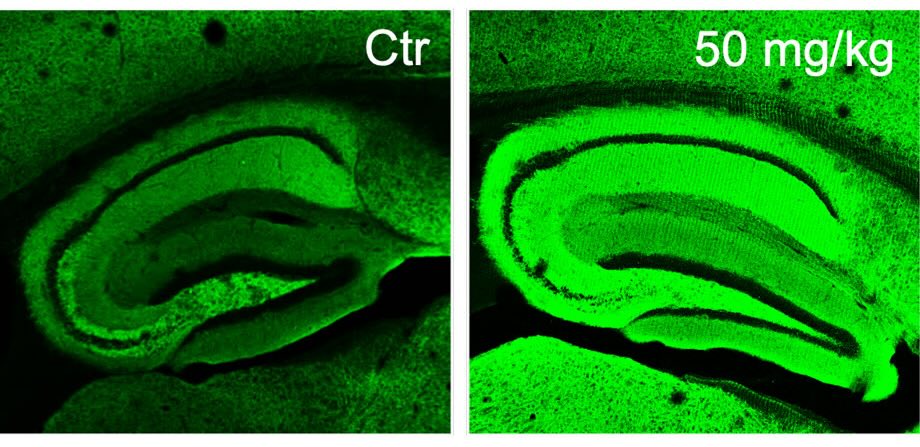In a remarkable tale of nature’s healing powers, scientists have uncovered a promising breakthrough in the fight against Alzheimer’s disease, inspired by the humble yet potent herb rosemary. This heartwarming story combines the wisdom of traditional remedies with cutting-edge research, illuminating a hopeful path for those facing cognitive decline.
For centuries, rosemary has been celebrated for its aromatic properties and connection to memory. Recent research has taken this age-old association to heart, exploring the impact of a compound found in both rosemary and sage on Alzheimer’s disease. Carnosic acid, renowned for its antioxidant and anti-inflammatory benefits, is at the center of this exploration.
While the pure form of carnosic acid isn’t suitable for medical use due to its instability, an innovative team at Scripps Research has crafted a breakthrough: a stable compound known as diAcCA. This newly synthesized derivative breaks down into carnosic acid in the gut, allowing it to be absorbed effectively into the bloodstream.
Published findings in the journal Antioxidants reveal exciting results from experiments conducted on mouse models of Alzheimer’s. The treated mice demonstrated significant improvements in memory and the density of synapse connections within their brains. Given the critical role that synapses play in cognitive function, this advancement shines a light of hope in the fight against dementia.
Research highlights that the decline in neuronal synapses strongly correlates with Alzheimer’s progression. The introduction of diAcCA not only appears to reverse some cognitive decline but also seems to diminish key disease biomarkers, including amyloid-β and phosphorylated-tau proteins—both notorious culprits in brain degeneration.
Microscopic analysis of tissue samples revealed another promising outcome: marked reductions in inflammation within the brain. The beauty of this unique compound lies in its ability to target only the inflamed areas, greatly minimizing potential side effects. Notably, carnosic acid is classified by the U.S. Food and Drug Administration as “generally regarded as safe,” paving the way for further clinical trials.
“By addressing both inflammation and oxidative stress, diAcCA significantly increased the number of synapses in the brain,” explains Professor Stuart Lipton, the study’s senior author. “We also tackled misfolding proteins, which are often linked to Alzheimer’s.” His enthusiasm speaks volumes, highlighting the compound’s dual action as both a healing agent and a preventive measure.

The team’s previous studies indicated that carnosic acid successfully crosses the blood-brain barrier, initiating a pathway that activates the body’s natural antioxidant and anti-inflammatory defenses. However, due to its propensity to oxidize, the direct use of carnosic acid in treatments faced limitations.
In their recent study, supported by the National Institutes of Health, Lipton and his co-author, Phil Baran, analyzed various carnosic acid derivatives and identified diAcCA as the standout candidate due to its stability and ability to be effectively absorbed in the body.
The two scientists then carefully administered the compound to the mouse models for three months. Upon evaluation, they were thrilled to find that the animals exhibited great improvements in memory and spatial learning. Significantly, the treated mice showed increases in neuronal synaptic density while decreasing the formation of the damaging proteins associated with Alzheimer’s.
Moreover, diAcCA was well-tolerated by the mice, demonstrating anti-inflammatory benefits as it converted to carnosic acid. Intriguingly, it also allowed for greater absorption, providing improved levels of carnosic acid in the bloodstream compared to direct intake.
Professor Lipton envisions a future where diAcCA complements existing Alzheimer’s treatments, potentially enhancing their efficacy while reducing adverse effects. He sees applications beyond Alzheimer’s, hoping diAcCA may also assist in the treatment of other inflammatory disorders, such as heart disease and type 2 diabetes.
This story of scientific innovation and the clever manipulation of natural compounds shows great promise, igniting hope for countless individuals and families affected by Alzheimer’s. As we embrace this journey towards healing, the prospect of brighter days ahead becomes more tangible than ever.
SHARE THIS MESSAGE OF HOPE with your friends and loved ones on social media!
If you would like to see similar good news stories click here & Share this to brighten someone’s day.





